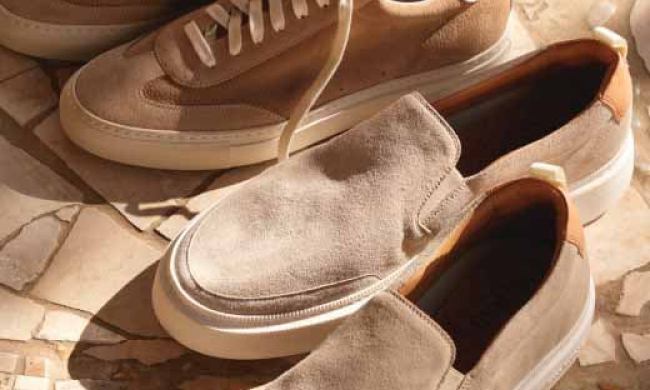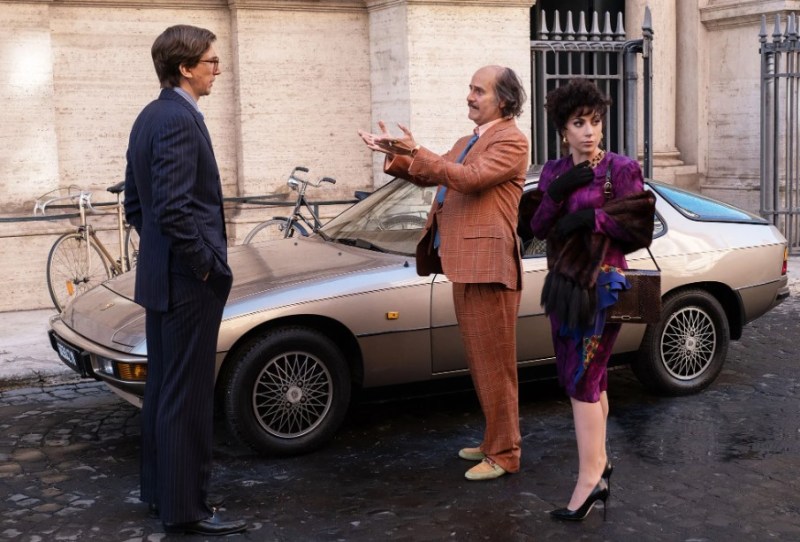
Let’s face it: Laces are a pain. As you get older, it just gets worse. Having to tie your shoes every time you put them on and untie them every time you take them off. Luckily for you, menswear has you covered, as they already have a whole slew of stylish options for wearing slip-on shoes. No, we’re not talking about thong sandals or Crocs; we’re talking about leather, velvet, or canvas options that, in some cases, are centuries old. And having the right slip-ons can even make you as stylish as a movie icon.
How to wear slip-ons
Before we get to listing out some of the best options for going laceless, we need to talk about how to wear them. The best thing about slip-ons, other than the fact that you never have to spend any time tying them, is that they can go from the most casual to relatively formal. There are some rules to wearing these shoes, but one of the most important is that in most situations, you want to wear them with no socks or with no-show socks. Show off a little ankle with these.
If you do decide to wear socks, they should never be with shorts and should almost always be dress socks with a more elevated situation. Caution is needed if you wear socks with any laceless shoes, as they can age you really quickly. You’ll start to look like your grandfather, who stopped wearing laced dress shoes because his back wouldn’t let him tie anything.
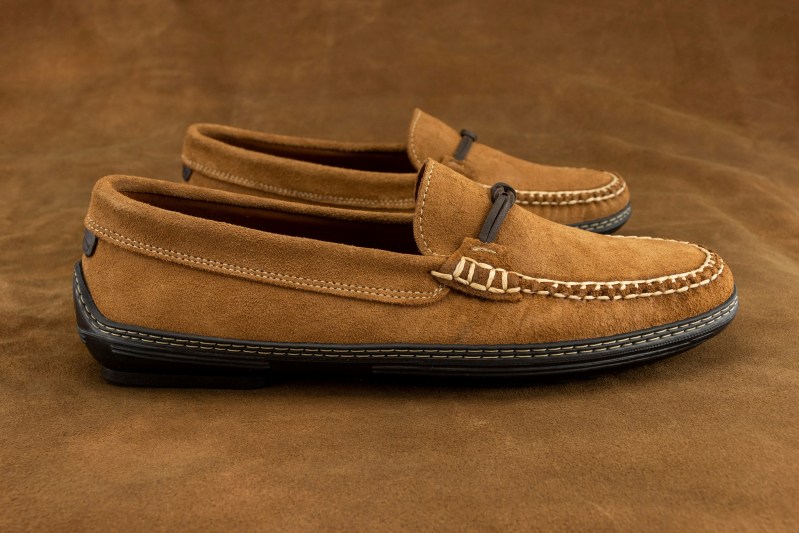
Mocs, boat shoes, and driving shoes
Moccasins, commonly shortened to mocs, are the quintessential American slip-on shoe. Shoemakers in the New England Colonies, when they were still British, started making their own interpretations of the footwear worn by the local Native Americans. Besides some minor technological improvements and adding a rubber sole, the basic moc design has stayed the same. A single leather panel sits on top of the foot while another panel wraps around the side of the foot. A leather lace is fed through eyelets behind the heel, around the ankle, then through two pairs of eyelets on the top panel, where it ties at the ankle. Rather than a lace going over the tongue that ties and unties with every wear, the moc lace cinches the ankle to the desired tightness that will keep the shoe secure while allowing the wearer to slip it on and off.
The moc design was so brilliantly simple that it remained unchanged for two hundred years. Then Paul A. Sperry decided he could make a better version for sailing. Inspired by the wrinkles on the pads of his dog’s feet, he added a wavy texture, known as sipping, to the rubber sole of his mocs. This provided traction in wet conditions. He also added a four-hole tab closure over the tongue to prevent the shoes from sliding off. These improvements produced a seaworthy moc that Sperry dubbed the Top-Sider. Eventually, the style became known as the boat shoe.
Mocs, boat shoes, and their cousin, driving shoes, are entryway slip-ons. They are the most common place to start your laceless journey, and for many, they’re good enough for life, popular with teenagers and dads alike. From a style perspective, they’re essentially a stand-in for sneakers. They’re so rich in American fashion history that they’re always a safe bet, meaning they’re an excellent place to start, but there are much more exciting ship-on shoe options.
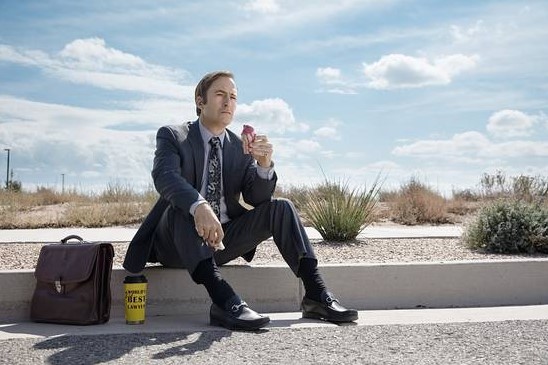
Loafers: penny, tassel, bit, and Belgian
Loafers are perhaps the most accurately and amusingly named item in menswear. To loaf around means to be relaxed and not busy. The term comes from the shoe’s original role as off-duty apparel for the English upper class in the early 1900s. A slip-on leather upper with a dignified sole, the style quickly immigrated to America, where it became a stylish casual shoe in the 1920s. In 1936, Maine shoemaker G.H. Bass introduced a loafer with a saddle strap wrapped over the tongue for extra support. Legend has it that schoolchildren used to stash pennies in the saddle strap, which led to people referring to that style as penny loafers. Penny loafers became the most common loafer style because of their sleek aesthetic.
Loafers crossed over into popular fashion during the 1950s. Brookes Brothers and Alden Shoe Makers collaborated on the first tassel loafer design. It was a nod to the moccasin that added a sophisticated flair to the loafer. Around the same time, Italian designer Aldo Gucci redesigned the loafer with a sleek finish, longer rounded toe, and a gold horse bit over the tongue. A few years later, Henri Bendel introduced his loafer design featuring a flatter slipper-like sole with a shorter heel, piping around the vamp, and a distinct leather bow on the tongue. Bendel named his design after the country where they were produced, Belgians. These three evolutions elevated loafers into formal wear status.
Take a look at any suiting editorial or marketing, and you will notice that oxfords have been replaced with loafers as the default formalwear shoe. That is because formalwear has become decidedly less formal over the past couple of years. However, loafers are just as useful as everyday shoes. As the ultimate do-it-all shoe, they can play up with formal wear and down with casual wear. Think of them as a more sophisticated alternative to mocs and boat shoes.
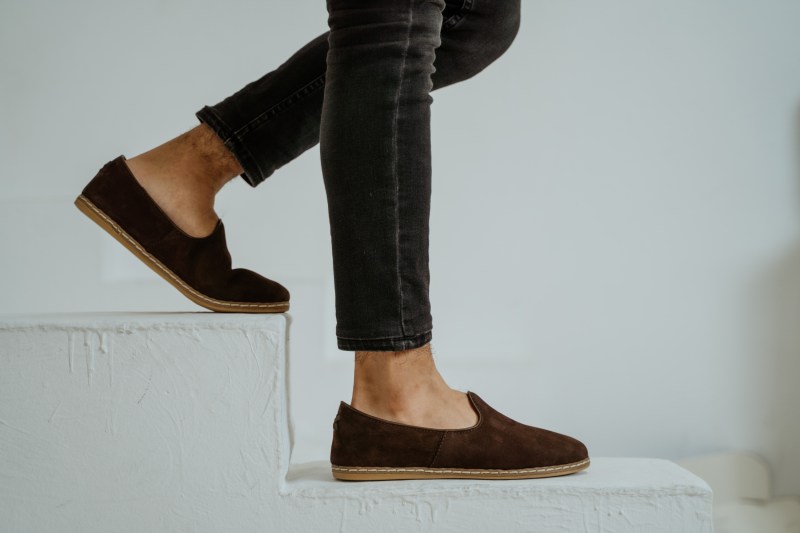
Espadrilles, huaraches, and Turkish slippers
Some of the most stylish slip-on shoes come from outside the English-speaking world. Espadrilles are a simple design consisting of a wound rope sole with a fabric wrap upper. The name is derived from the style of rope that was initially used to construct the sole. Poor people in France and Spain originally wore them, but their light and comfortable design made them fashionable in the early twentieth century. Today they are a popular vacation shoe in Europe and everyday summer shoe in America.
Huaraches are a modern interpretation of footwear worn by the indigenous peoples of the area that became Mexico and the southwest U.S. Narrow leather pieces are woven in a basket pattern to form the upper, attached to a solid leather sole. They’re often called sandals, indicating their relaxed nature, but they are technically solid leather slip-on shoes. Huaraches have been popular for generations in Southern California, but their popularity is growing globally. They’re a fancier alternative to a sandal and a more breathable alternative to a loafer in hotter climates.
Turkish-style slippers, sometimes referred to as Persian, have been worn throughout the Middle East and North Africa for centuries. They’re made from a two-panel upper woven together, either front to back or side by side, with a prominent welt stitch attaching the upper to a flat, flexible leather sole. The upper is either leather or woven cotton and traditionally comes in bright decorative colors. They’re ideally suited to hot arid climates — lightweight and comfortable yet durable enough for rough terrain. After many generations of success in the Mediterranean region, companies like Atlantis and Sabah are selling Turkish slippers to the global fashion market.
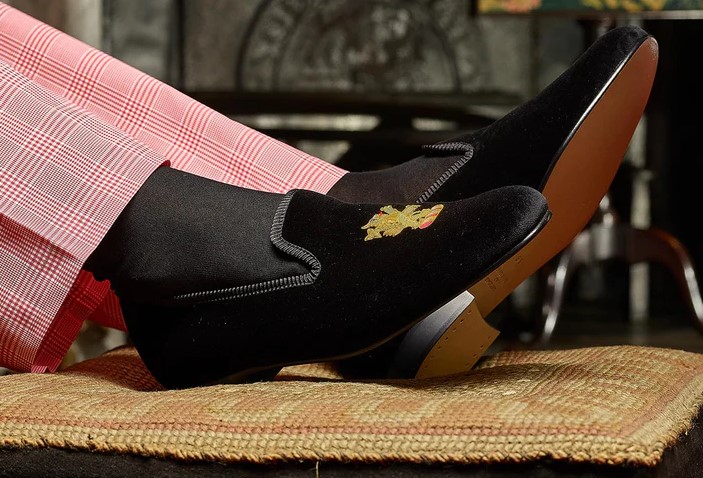
Slippers: Velvet and needlepoint
If there is a bright shining indication to be found that slip-on shoes are the new normal in menswear, it is the emergence of wearing slippers in public. It’s been a cheeky move for generations of upper-class dandies to wear slippers to the occasional black tie affair. These slippers were either velvet smoke shoes or linen needlepoint house shoes; both resigned to casual at-home wear for generations. Wearing them in public demonstrated a sort of punk attitude towards buttoned-up fashion rules.
With menswear experiencing a wave of this punk dissonance recently, slippers have become a popular choice in social footwear. By pulling from the closet of classic menswear specifically to disregard traditional standards, you’re reinvigorating the spirit of style. The Italians call it “sprezzatura,” and it’s doing with clothing what Monet did with a paintbrush. It’s taking something old and making it new again by readjusting perspective.
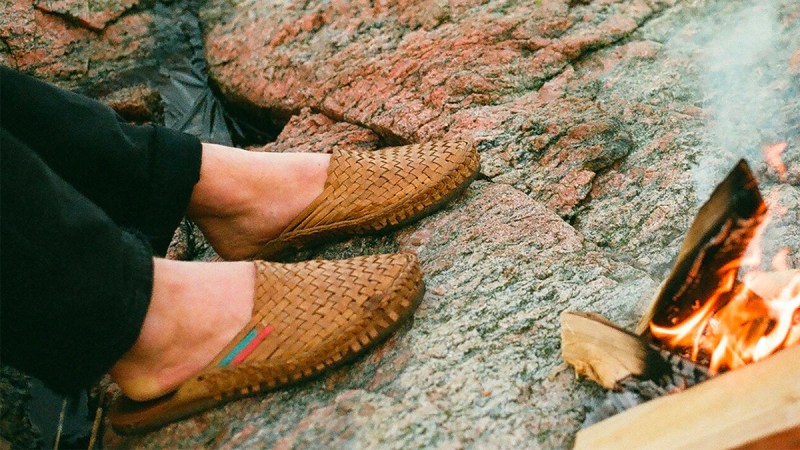
Mules: The ultimate slip-ons
A mule is a style of shoe without a back, designed to slide your foot right in and out. They offer the minimal effort of a sandal with the look of a shoe. Mules come in a variety of styles depending on what the front of the shoe looks like. You can have a moccasin, loafer, huarache, or slipper all turned into a mule by removing the back. The only requirement is that the shoe needs to have a heel because the downward slope of your foot will keep it from slipping out when you walk.
Mules are the ultimate slip-on shoes because they provide the most comfort possible while still wearing proper shoes. The at-ease vibe displayed by wearing slip-ons is maximized with mules. Replace your favorite pair of slides with a pair of mules, and you can wear them with shorts, chinos, jeans, or a suit. If comfort is the prerogative with fashion these days, then mules are the perfect shoe.
So who needs laces? With so many excellent slip-on shoes to choose from, you can go all summer without bending over to tie anything. Mocs are an excellent place to start, but loafers are even better, add a nice Turkish mule or espadrille to the mix, and you’re set. If you’re really feeling adventurous, then get a flashy mule and wear them absolutely everywhere. Or you can wear the same velvet slippers with jeans to brunch as you wore with a suit to a wedding. The idea is to embrace simplicity and comfort — aesthetically, physically, and psychologically. The vibe in menswear these days is relaxed and free-spirited, so free up your feet with slip-on shoes.



